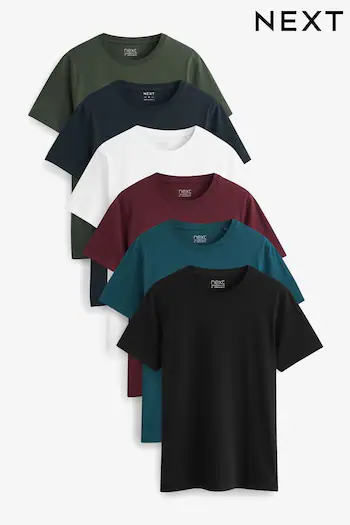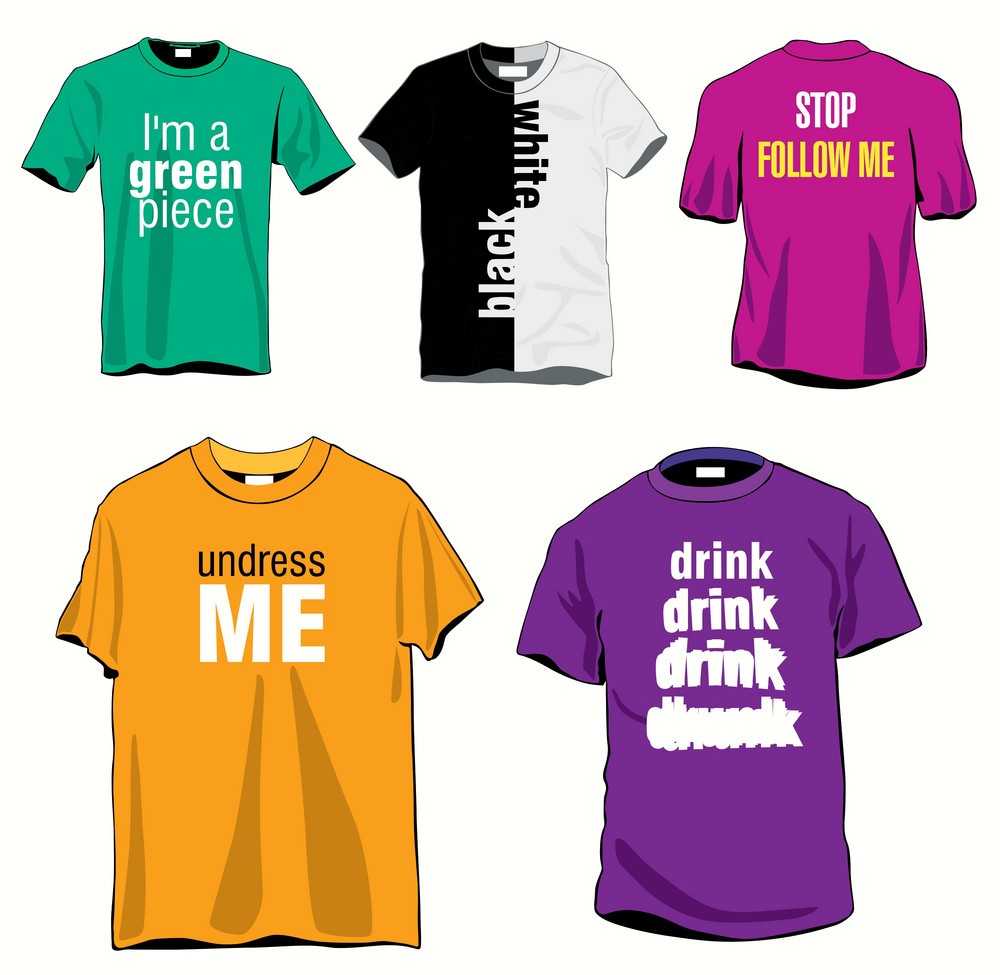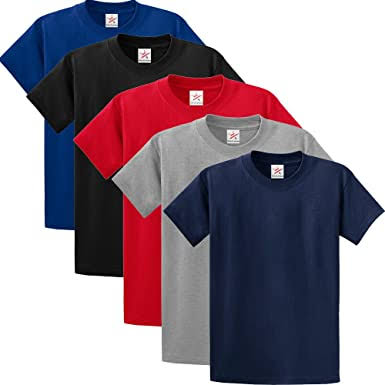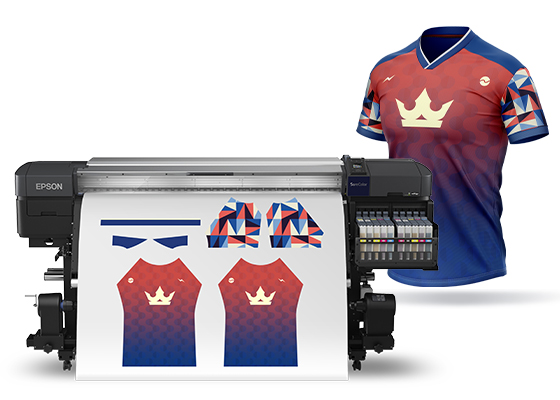T-Shirt Store

About Product
A T-shirt (also spelled tee shirt, or tee for short) is a style of fabric shirt named after the T shape of its body and sleeves. Traditionally, it has short sleeves and a round neckline, known as a crew neck, which lacks a collar.
T-shirts are generally made of stretchy, light, and inexpensive fabric and are easy to clean. The T-shirt evolved from undergarments used in the 19th century and, in the mid-20th century, transitioned from undergarments to general-use casual clothing.
students for higher education at a university, with or without the presence of athletic courts, fields, or equipment.
History of T-Shirts
Simple, T-shaped top garments have been a part of human clothing since ancient times; garments similar to the T-shirt worn earlier in history are generally called tunics.
The modern T-shirt evolved from undergarments used in the 19th century. First, the one-piece union suit underwear was cut into separate top and bottom garments, with the top long enough to tuck under the waistband of the bottoms. With and without buttons, they were adopted by miners and stevedores during the late 19th century as a convenient covering for hot environments.

The T-Shirts

They are typically made of cotton textile in a stockinette or jersey knit, which has a distinctively pliable texture compared to shirts made of woven cloth.
Some modern versions have a body made from a continuously knitted tube, produced on a circular knitting machine, such that the torso has no side seams. The manufacture of T-shirts has become highly automated and may include cutting fabric with a laser or a water jet.
T-shirts are inexpensive to produce and are often part of fast fashion, leading to outsized sales of T-shirts compared to other attire. For example, two billion T-shirts are sold per year in the United States, or the average person in Sweden buys nine T-shirts a year. Production processes vary but can be environmentally intensive and include the environmental impact caused by their materials, such as cotton, which uses a lot of water and pesticides.
Types of T-Shirts
Dye-sublimation printing
Dye-sublimation printing is a direct-to-garment digital printing technology using full color artwork to transfer images to polyester and polymer-coated substrate based T-shirts.
Dye-sublimation (also commonly referred to as all-over printing) came into widespread use in the 21st century, enabling some designs previously impossible. Printing with unlimited colors using large CMYK printers with special paper and ink is possible, unlike screen printing which requires screens for each color of the design.
All-over print T-shirts have solved the problem with color fading and the vibrancy is higher than most standard printing methods but requires synthetic fabrics for the ink to take hold.

Heat transfer vinyl (HTV)
Another form of T-shirt decoration is heat transfer vinyl, also called HTV. HTV is a polyurethane material that allows apparel designers to create unique layered designs using a specialized software program. Once the design is created, it is then cut through the material using a vinyl cutter (or Cut n Press) machine.
After the design is cut, there is a process called “weeding” whereby the areas of the design that do not represent the design are picked away from the transfer sheet and removed so that the intended design remains. HTV is typically smooth to the touch and does not feel rubbery or stiff. The edges are typically clean cut and produce high contrast.
Screen Printing
The most common form of commercial T-shirt decoration is screen printing. In screen printing, a design is separated into individual colors. Plastisol or water based inks are applied to the shirt through mesh screens partially coated with an emulsion which limits the areas where ink is deposited. In most commercial T-shirt printing, a limited number (typically one to four) of spot colors are used to print the design. To achieve a wider color spectrum with a limited number of colors, process printing (using only cyan, magenta, yellow and black ink) or simulated process (using only white, black, red, green, blue, and gold ink) is effective. Process printing is best suited for light colored shirts. The simulated process is best suited for dark colored shirts.
In 1959, the invention of plastisol provided an ink more durable and stretchable than water-based ink, allowing much more variety in T-shirt designs. Very few companies continue to use water-based inks on their shirts. The majority of companies that create shirts prefer plastisol due to the ability to print on varying colors without the need for color adjustment at the art level.

COMMENTS
I Like your store very much, you have good products.
I always come your store, and that is best practise for me. Thanks for all products what you have
You always have very high quality products
Contact us
- 1856 Magnolia Rd, Woodward, IA 50276, USA
- [email protected]
- 1(0049)623-72-77
- 7/31